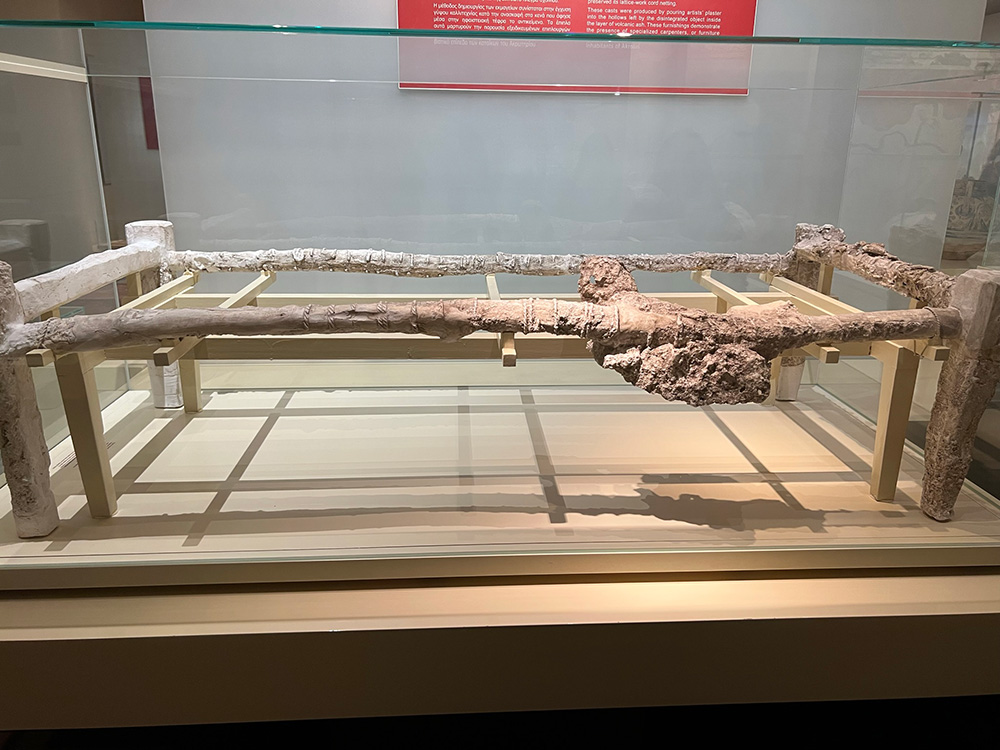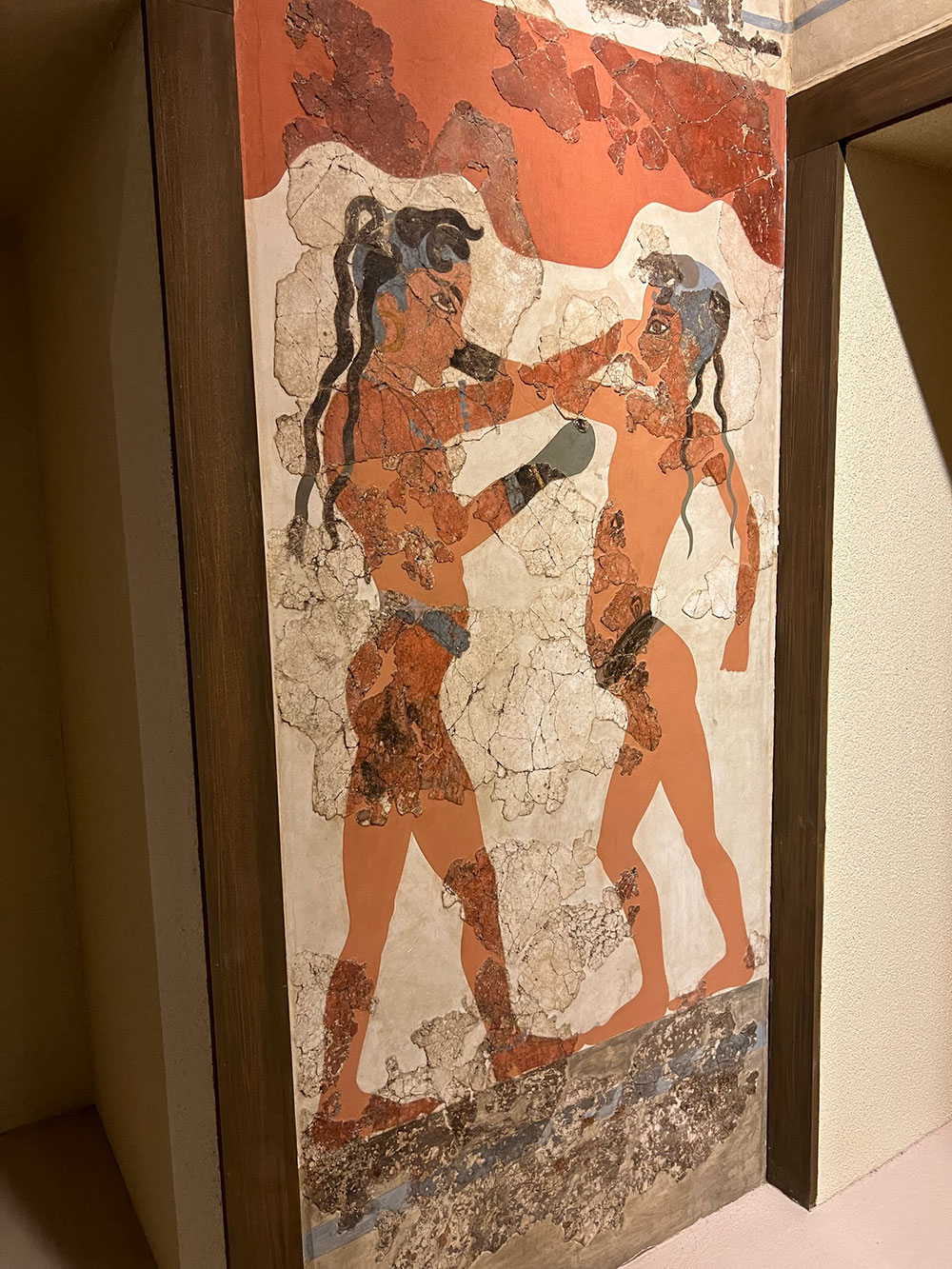If you’re exploring Fira, the bustling capital of Santorini, one must-see stop for history enthusiasts and curious travelers alike is the Museum of Prehistoric Thera. This hidden gem, nestled within the lively streets of Fira, offers a remarkable journey into the past, taking visitors back thousands of years to uncover the secrets of one of the ancient world’s most vibrant and influential islands. From volcanic eruptions to thriving civilizations, the museum captures the essence of Santorini’s rich and layered history, revealing how the island became the captivating destination it is today.
A Brief History of the Museum
The Museum of Prehistoric Thera opened its doors in 2000, housing artifacts primarily from the ancient city of Akrotiri, often referred to as the “Minoan Pompeii.” This ancient settlement, buried under volcanic ash in the 17th century BC, was remarkably preserved, offering valuable insights into the daily lives, trade, art, and technology of its inhabitants. The museum’s collection spans the Neolithic to the Late Cycladic periods, presenting a comprehensive look at the island’s development over millennia.
What You’ll Discover Inside
The museum is divided into four sections, each offering a glimpse into different aspects of Santorini’s prehistoric culture and development.
- Geological Beginnings: Understanding Santorini’s Landscape
The first exhibit showcases the geology of Santorini, helping visitors understand how the island’s famous caldera was formed. The dramatic volcanic activity that shaped Santorini also played a significant role in its history. Here, you’ll find fossils and geological samples that date back millions of years, which lay the foundation for understanding the island’s unique landscape and its influence on the people who settled here.
- The Early Cycladic Period: Life Before the Eruption
The second section takes you back to the Neolithic period, highlighting early settlements on the island. This period reveals early Cycladic figurines, pottery, and tools, offering a glimpse into the life of the island’s inhabitants well before Akrotiri’s peak. The collection reflects the resourcefulness of early Santorini residents, showcasing tools crafted from local volcanic stones and pottery adorned with simple, elegant designs that represent early Greek artistry.
- Akrotiri: The Bronze Age Metropolis
The heart of the museum’s collection lies in its artifacts from Akrotiri. Discovered in the 1960s, the excavations at Akrotiri revealed a city with advanced urban planning, multi-story buildings, and an extensive drainage system. The preserved frescos, pottery, and jewelry found here give an in-depth look at the sophisticated society that once thrived on the island.
- Frescoes: One of the museum’s highlights is its collection of vibrant frescoes, depicting natural scenes, animals, and everyday life. The “Spring Fresco,” with its delicate flowers and vivid colors, is particularly popular, offering insight into how the Akrotiri people connected with their environment.
- Pottery and Ceramics: The intricate pottery showcases the craftsmanship of the Akrotiri people, with designs often influenced by nature, including motifs of dolphins, birds, and flowers. The shapes, colors, and decorations tell a story of trade and cultural exchange between the Aegean islands and beyond.
- Post-Eruption Era: Rebirth and Preservation
The final section explores the impact of the volcanic eruption that buried Akrotiri and Santorini’s later history. This display includes pottery and artifacts from the island’s period of reoccupation, reflecting the resilience of Santorini’s people. Even after such a catastrophic event, the island continued to play an essential role in the Cycladic world.

Practical Information
The museum is centrally located in Fira, making it an easy addition to your itinerary. After taking in the museum’s treasures, you’ll find yourself just steps away from Fira’s vibrant shops, cafes, and caldera views.
- Opening Hours: The museum is generally open Tuesday through Sunday; however, hours vary by season, so it’s best to check in advance.
- Admission Fees: The Museum of Prehistoric Thera offers two ticketing options for visitors:
- Single Entry Ticket: For those only wanting to visit the Museum of Prehistoric Thera, the single entry ticket is available for €6, with discounts available for students and children.
- 3-Day Combined Ticket: For a more comprehensive experience, the combined ticket provides access to multiple historical sites across Santorini, including the Archaeological Site of Akrotiri, the Archaeological Site of Ancient Thera, and the Museum of Prehistoric Thera. The combined ticket costs €15 for a full-price ticket and is valid for 3 days, allowing flexibility to explore each site at your own pace. Visitors can purchase this ticket at any of the three locations and use it across all included sites during its validity period. This combined option offers an immersive dive into the rich history of Santorini, making it a fantastic choice for those interested in experiencing the island’s archaeological heritage.
- Guided Tours: For a deeper understanding, consider a guided tour, as this can enhance your experience and provide context for the artifacts on display.

Why Visit the Museum of Prehistoric Thera?
Visiting the Museum of Prehistoric Thera is a journey into the heart of Santorini’s history. It provides a unique perspective on how the island has evolved, shaped by both human innovation and natural forces. Here, you’ll gain a newfound appreciation for Santorini—not just for its stunning landscapes, but for the resilience and creativity of its ancient inhabitants. The museum connects you with the island’s past, adding a layer of depth to the iconic beauty of Santorini that lies beyond its blue domes and pristine beaches.
So, next time you’re in Fira, make sure to take a detour from the bustling shops and scenic viewpoints to visit the Museum of Prehistoric Thera. It’s an experience that will enrich your understanding of Santorini, making your stay on the island even more unforgettable.





